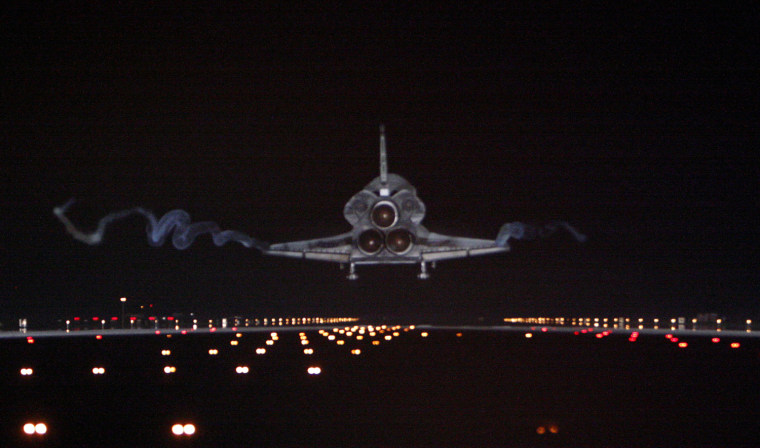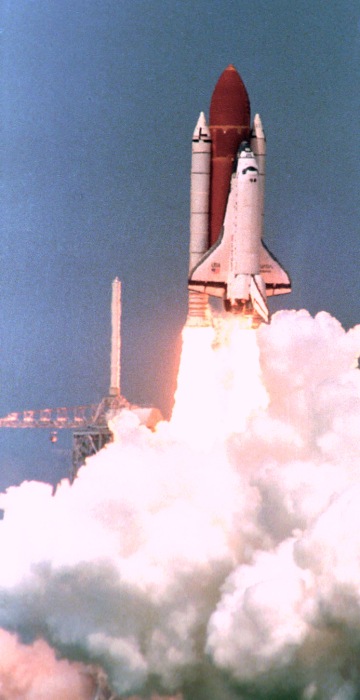
Science News
The final countdown: Shuttle Atlantis

Atlantis rising
The space shuttle Atlantis makes its maiden voyage on Oct. 3, 1985, for the Defense Department's STS-51-J mission. At 176,413 pounds, Atlantis is nearly 3.5 tons lighter than Columbia, which was the heaviest shuttle. Atlantis is the lightest shuttle of the remaining fleet, weighing 3 pounds less than the shuttle Endeavour (with the three main engines). Atlantis is also the last space shuttle to be retired.
Other statistics:
Length: 122.17 feet
Height: 56.58 feet
Wingspan: 78.06 feet
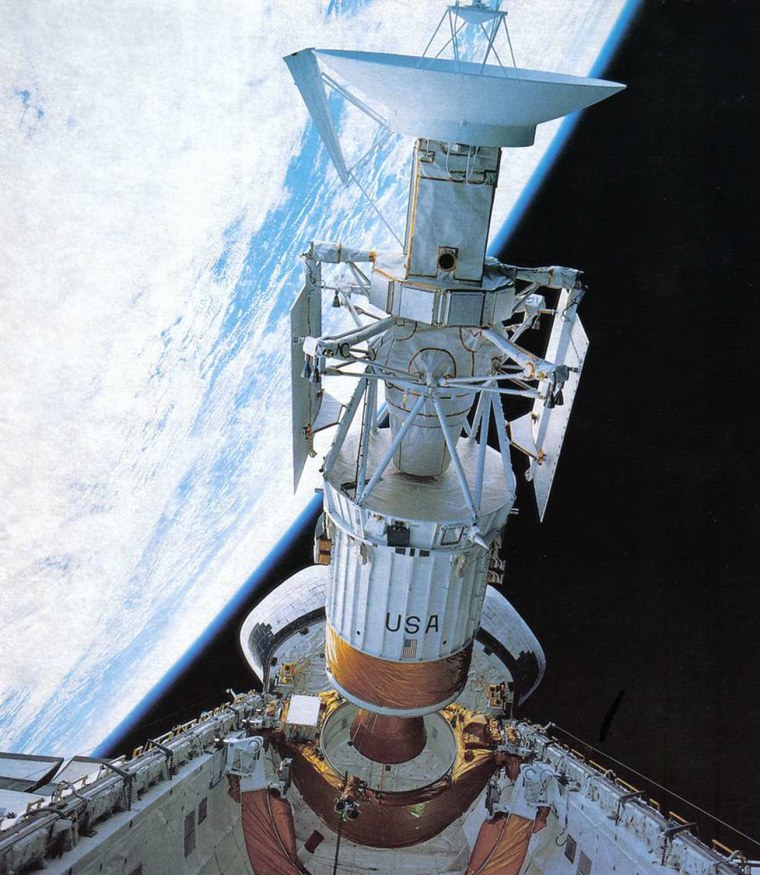
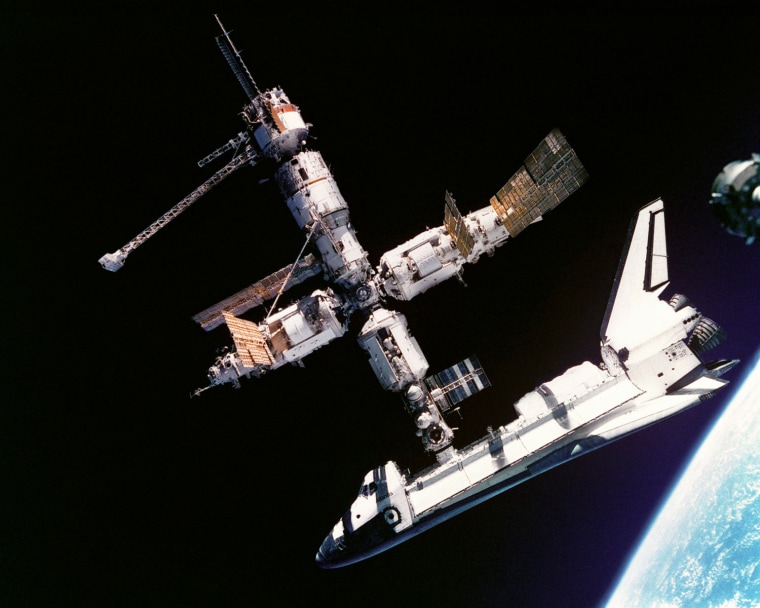
Mission to Mir
NASA and the Russian space agency kicked off a new era in international space cooperation during the STS-71 mission in June 1995, when Atlantis docked with Russia's Mir space station for the first time. This historic photo of the linked spacecraft was taken from a Russian Soyuz capsule during a fly-around.
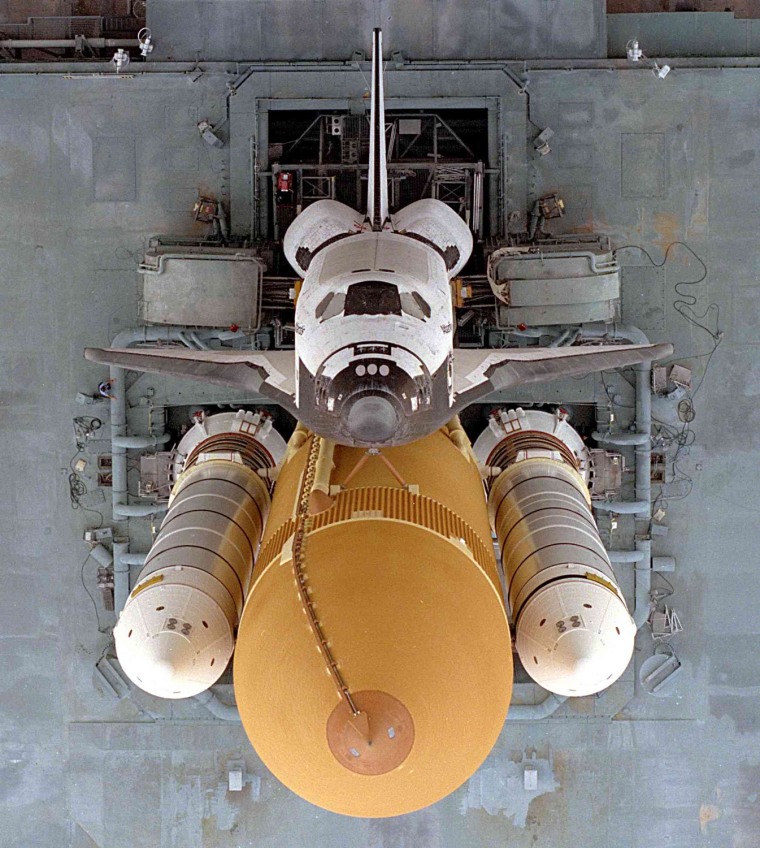
Here's looking at you
The space shuttle Atlantis begins the slow journey to Launch Pad 39A from the Vehicle Assembly Building at NASA's Kennedy Space Center in preparation for the launch of STS-79 in September 1996. This dramatic view, looking directly down onto the shuttle stack, was taken from the roof of the 525-foot-tall VAB.
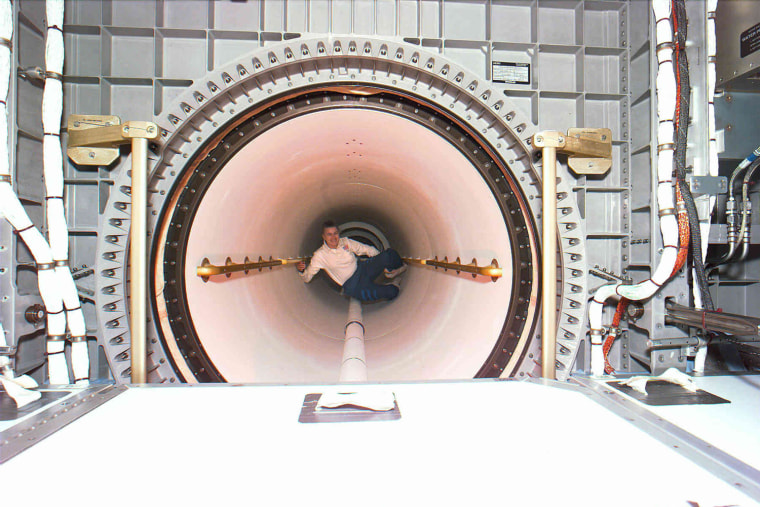
Science in orbit
Astronaut Shannon Lucid floats through the tunnel that connects Spacelab to Atlantis' cabin on Sept. 24, 1996. The Spacelab module rode in the shuttle's cargo bay and provided more space for scientific experiments. During this STS-79 mission, Atlantis linked up with Russia's Mir space station and brought Lucid back to Earth.

Lighting up the night
Atlantis streaks into the early morning sky from NASA's Kennedy Space Center on May 15, 1997, as seen in this long-exposure photo taken from Veterans Memorial Park in Titusville, Fla. Atlantis' 10-day STS-84 mission featured a docking with Russia's Mir space station and a crew transfer. Atlantis docked with Mir seven times before the space station was deorbited in 2001.
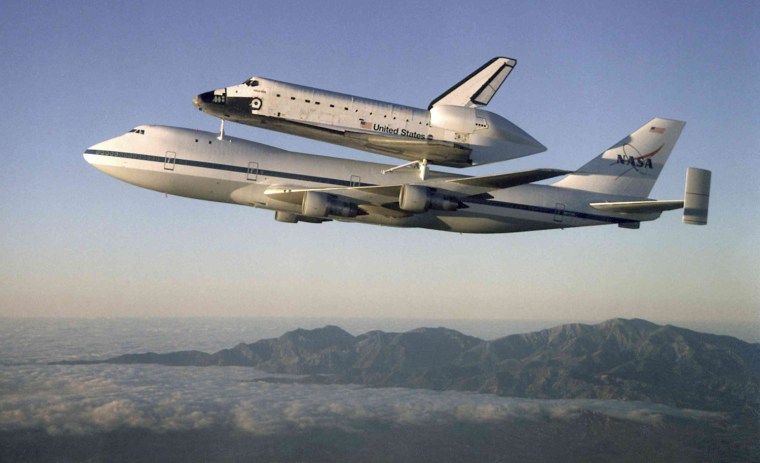
Good as new
The space shuttle Atlantis went back to its assembly plant in Palmdale, Calif., for 10 months of refurbishment and upgrades in 1997-1998. This aerial photo shows Atlantis taking a piggyback ride back to Kennedy Space Center in Florida atop a modified Boeing 747 jet on Sept. 1, 1998.
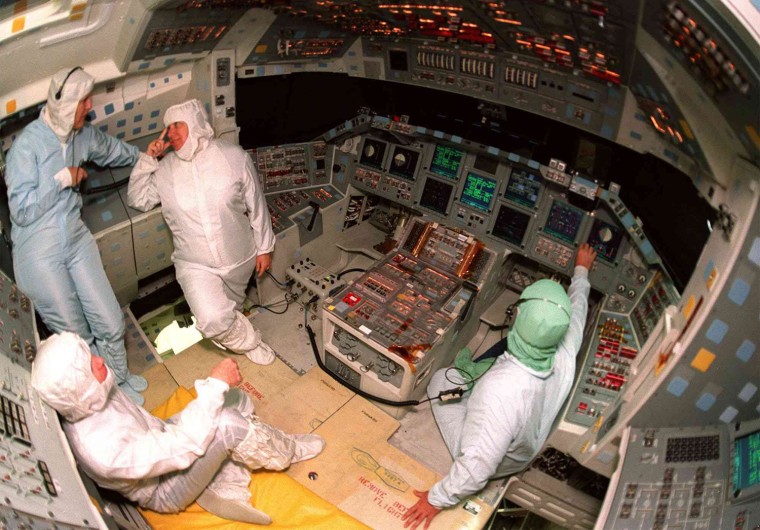
Checking it out
Atlantis' upgraded cockpit gets a once-over in 1999 from engineers and executives, including Roy Bridges, Kennedy Space Center's director (seated at bottom left), as well as Laural Patrick, Joann Morgan and George Selina. The upgrades made Atlantis the most modern orbiter in the shuttle fleet, with a control system as advanced as those found on commercial jet airliners and military aircraft.
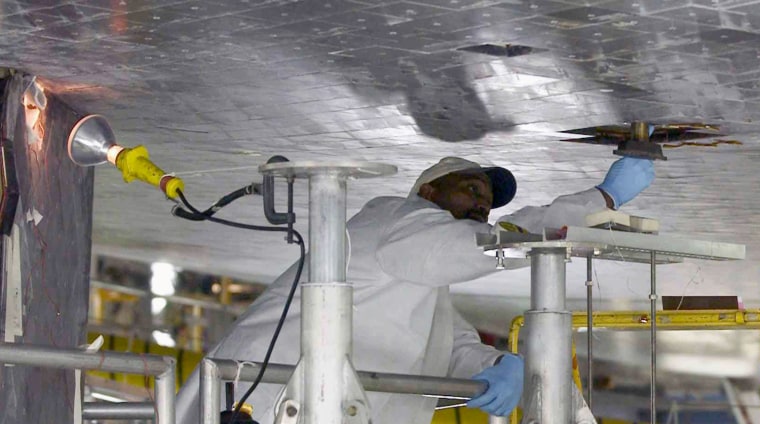
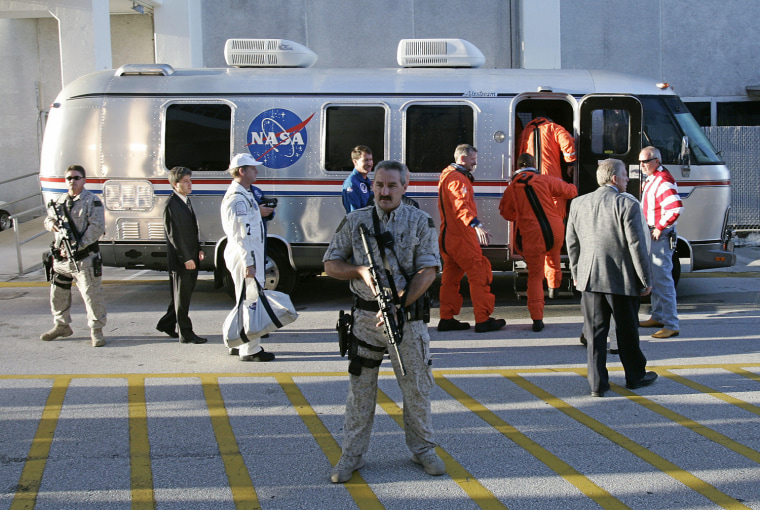
Back in business
Atlantis' astronauts leave their quarters at Kennedy Space Center and board the "Astrovan" for the ride out to Launch Pad 39B on Sept. 8, 2006, while gun-toting guards keep watch. A faulty fuel gauge grounded the shuttle for an extra day, but on Sept. 9 the shuttle lifted off on its STS-115 mission to the International Space Station. It marked Atlantis' first launch since 2002.
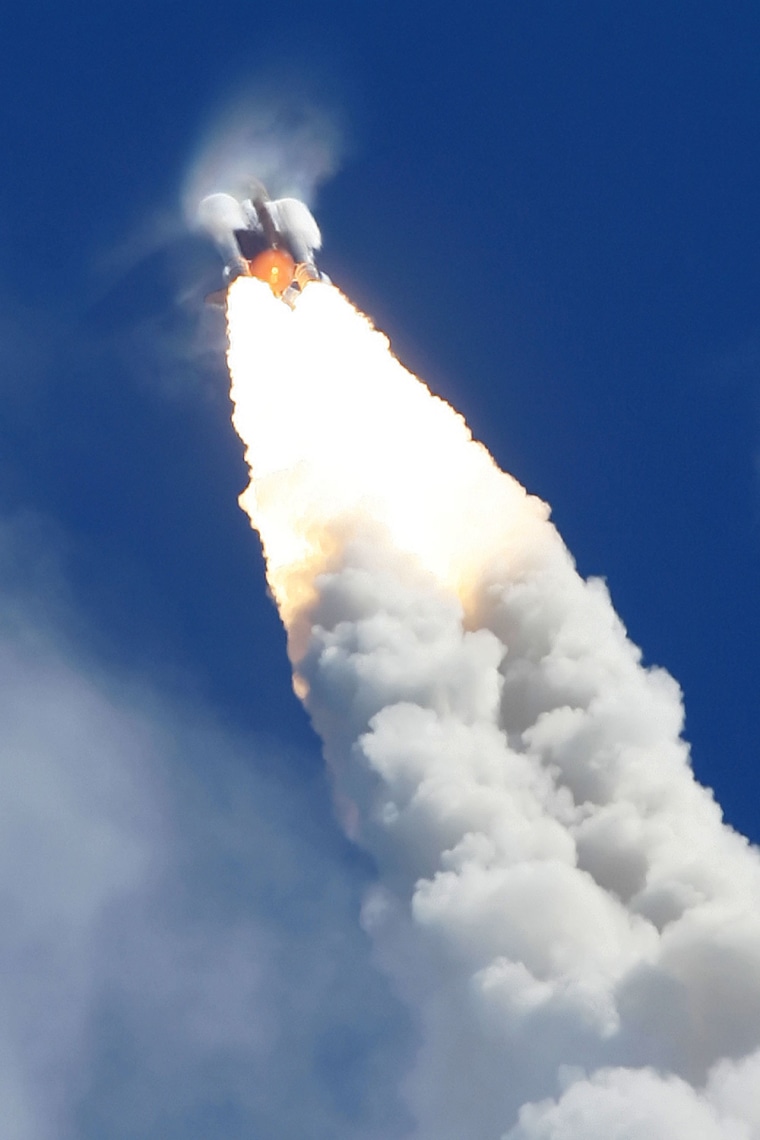
Liftoff!
The space shuttle Atlantis rises on a pillar of cloud from Launch Pad 39B at Kennedy Space Center on Sept. 9, 2006. Atlantis delivered structural components to the International Space Station during its STS-115 mission, resuming an orbital construction project that was stopped following the 2003 Columbia tragedy.
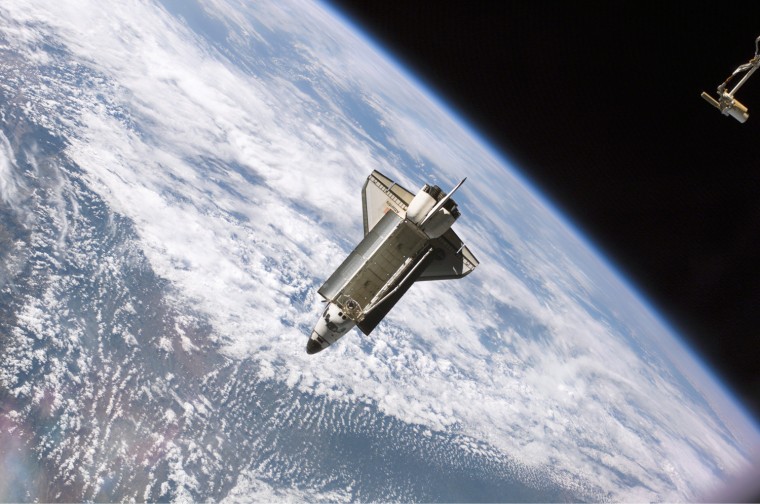
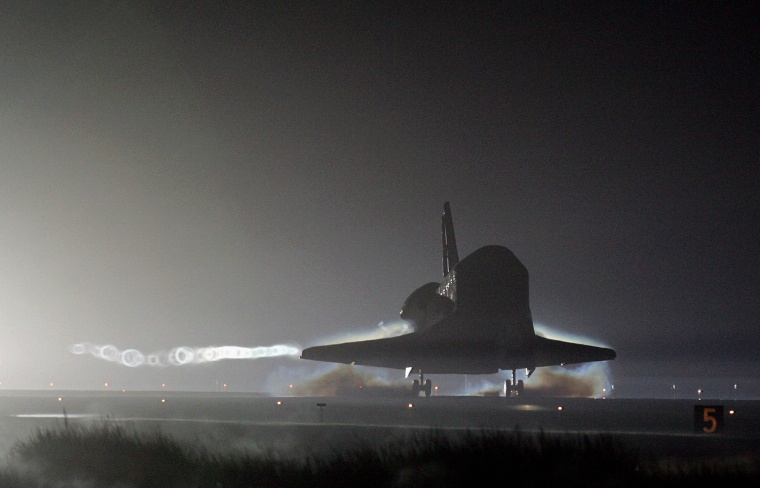
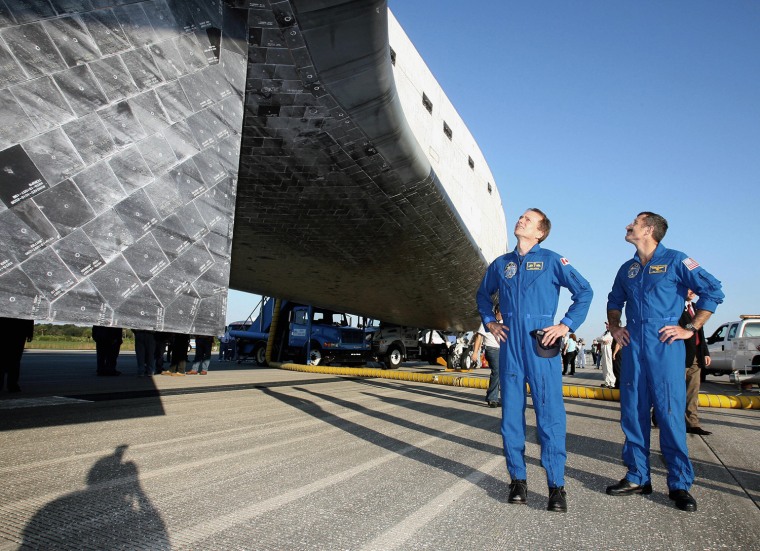
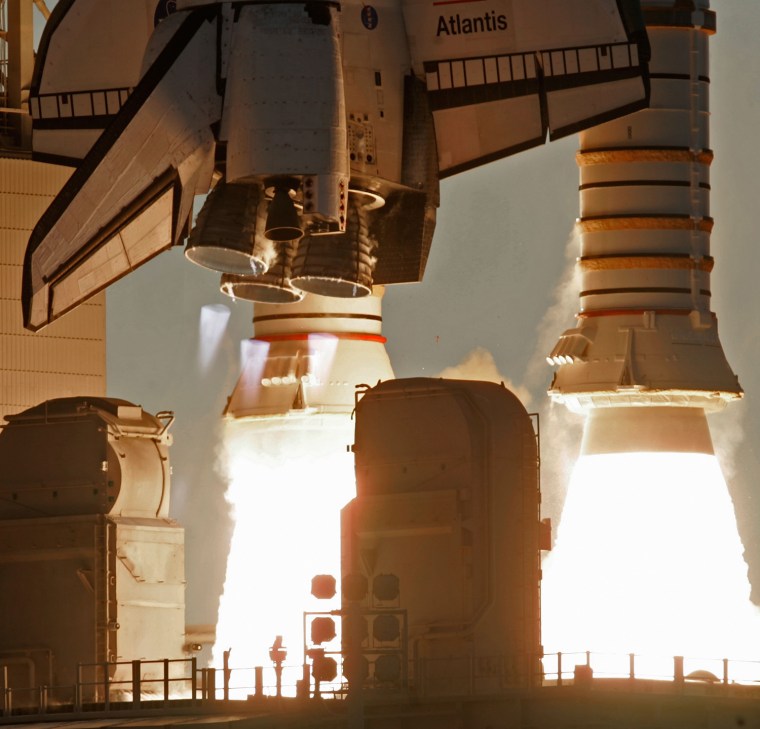
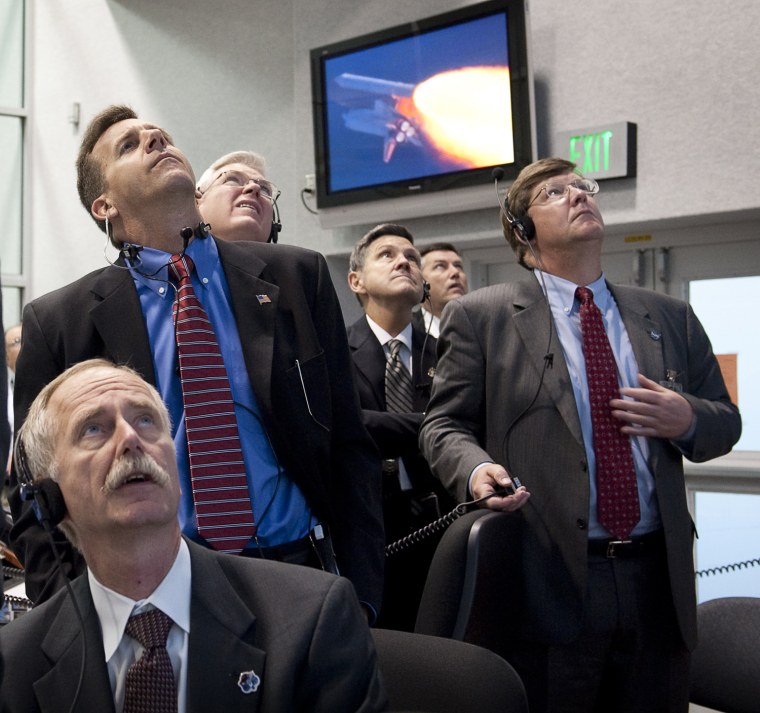
Watching the ascent
NASA mission managers monitor Atlantis' liftoff from Firing Room 4 at Kennedy Space Center in Florida on Nov. 16, 2009. During the STS-129 mission, Atlantis delivered a payload platform and vital supplies to the International Space Station.
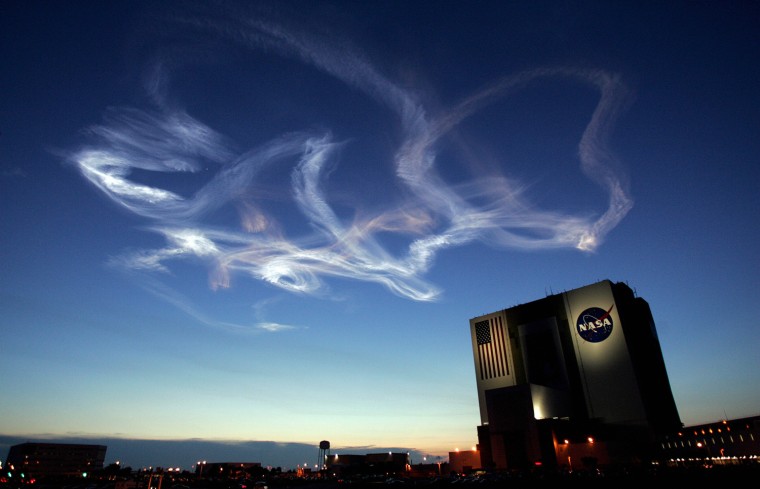
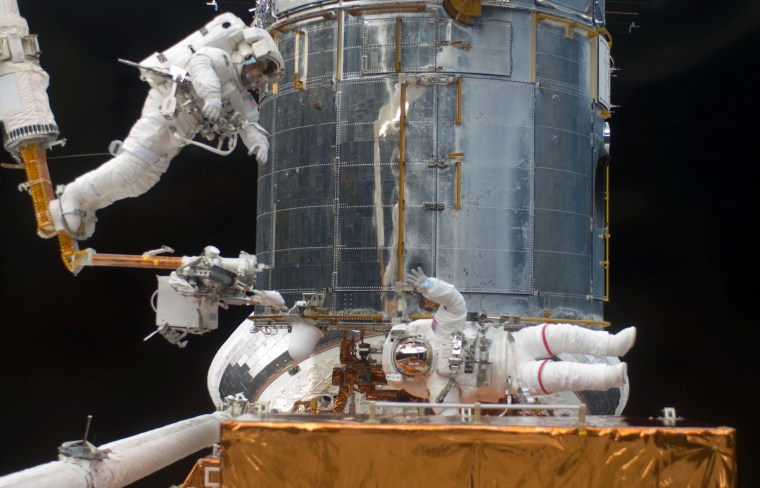
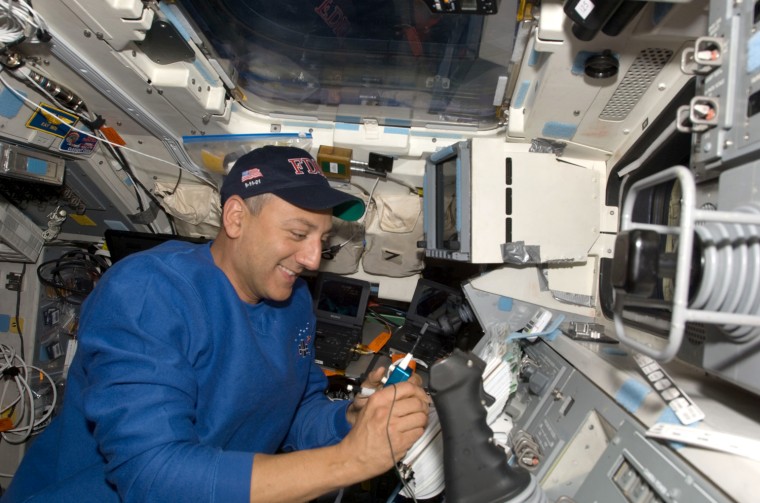
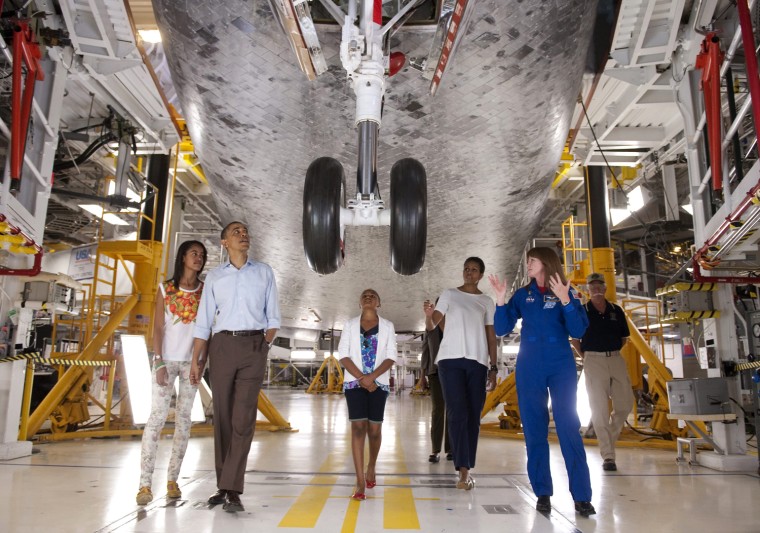
First Family meets Atlantis
NASA astronaut Janet Kavandi leads President Barack Obama, First Lady Michelle Obama and their daughters Sasha and Malia beneath the shuttle Atlantis during a tour of the Orbiter Processing Facility at Kennedy Space Center on April 29, 2011. At the time, Atlantis was being prepared for its final flight.
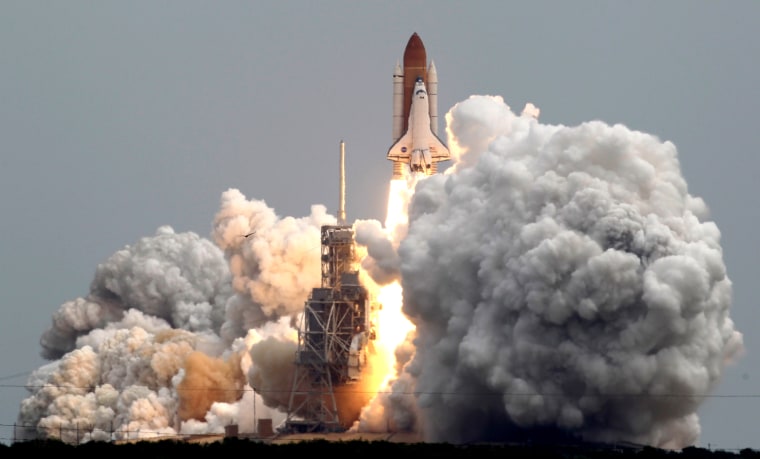
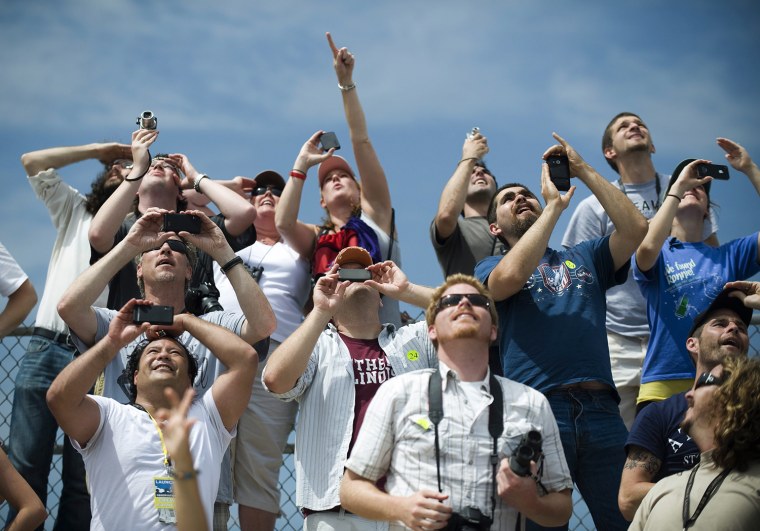
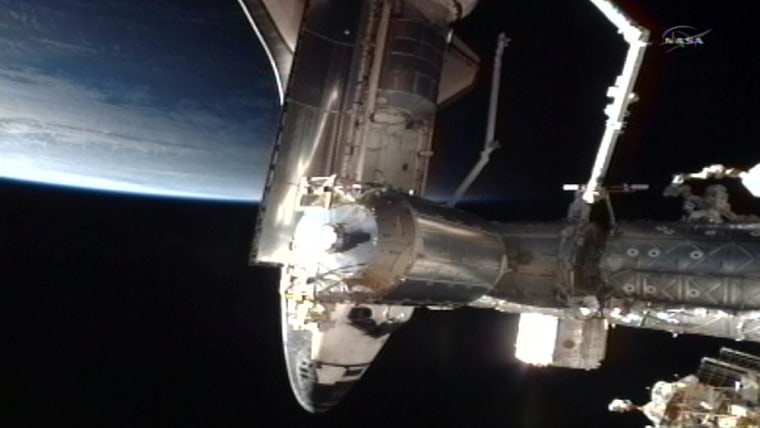
Last rendezvous
The space shuttle Atlantis docks with the International Space Station for the last time on July 10, 2011. The shuttle delivered more than four tons of food, clothes and other supplies to keep the space station going in the post-shuttle era. NASA figures that this shipment will help keep the space station provisioned at least through the end of 2012.
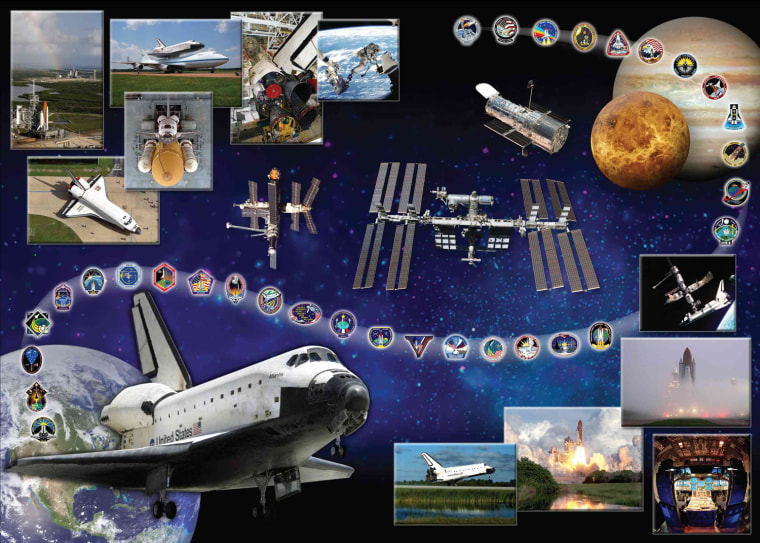
Flight into history
This poster pays tribute to the shuttle Atlantis' quarter-century of spaceflight: Graphic elements include the International Space Station and Russia's Mir space station, the Hubble Space Telescope (which Atlantis visited during the last servicing mission) and Venus and Jupiter (which were the destinations for probes launched from Atlantis). Threaded through the design are the mission patches for each of Atlantis' flights. A copy of this tribute poster hangs in Firing Room 4 of the Launch Control Center at NASA's Kennedy Space Center in Florida.
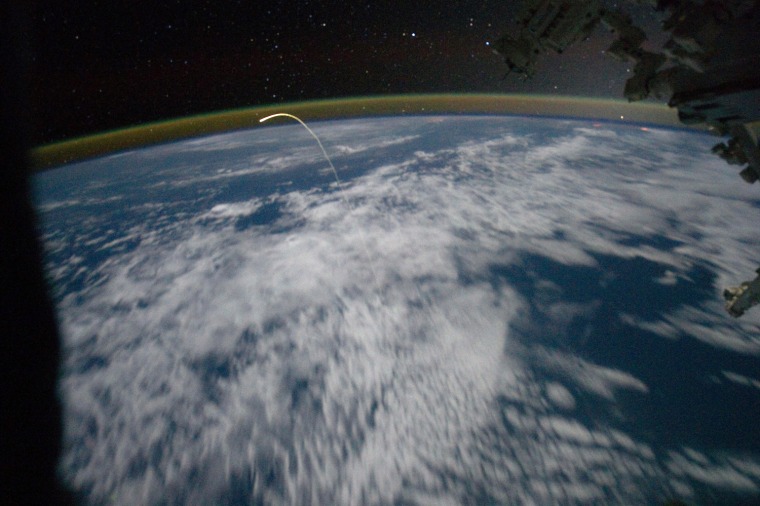
An unprecedented view of the space shuttle Atlantis, appearing like a bean sprout against clouds and city lights, on its way home, as photographed by the Expedition 28 crew of the International Space Station on July 21, 2011. Airglow over Earth can be seen in the background. The Atlantis returned to Earth marking the end of the space shuttle era when its wheels touched down for the last time at the Kennedy Space Centre. 'After serving the world for over 30 years, the space shuttle has earned its place in history. It's come to a final stop,' Atlantis commander Chris Ferguson replied.

